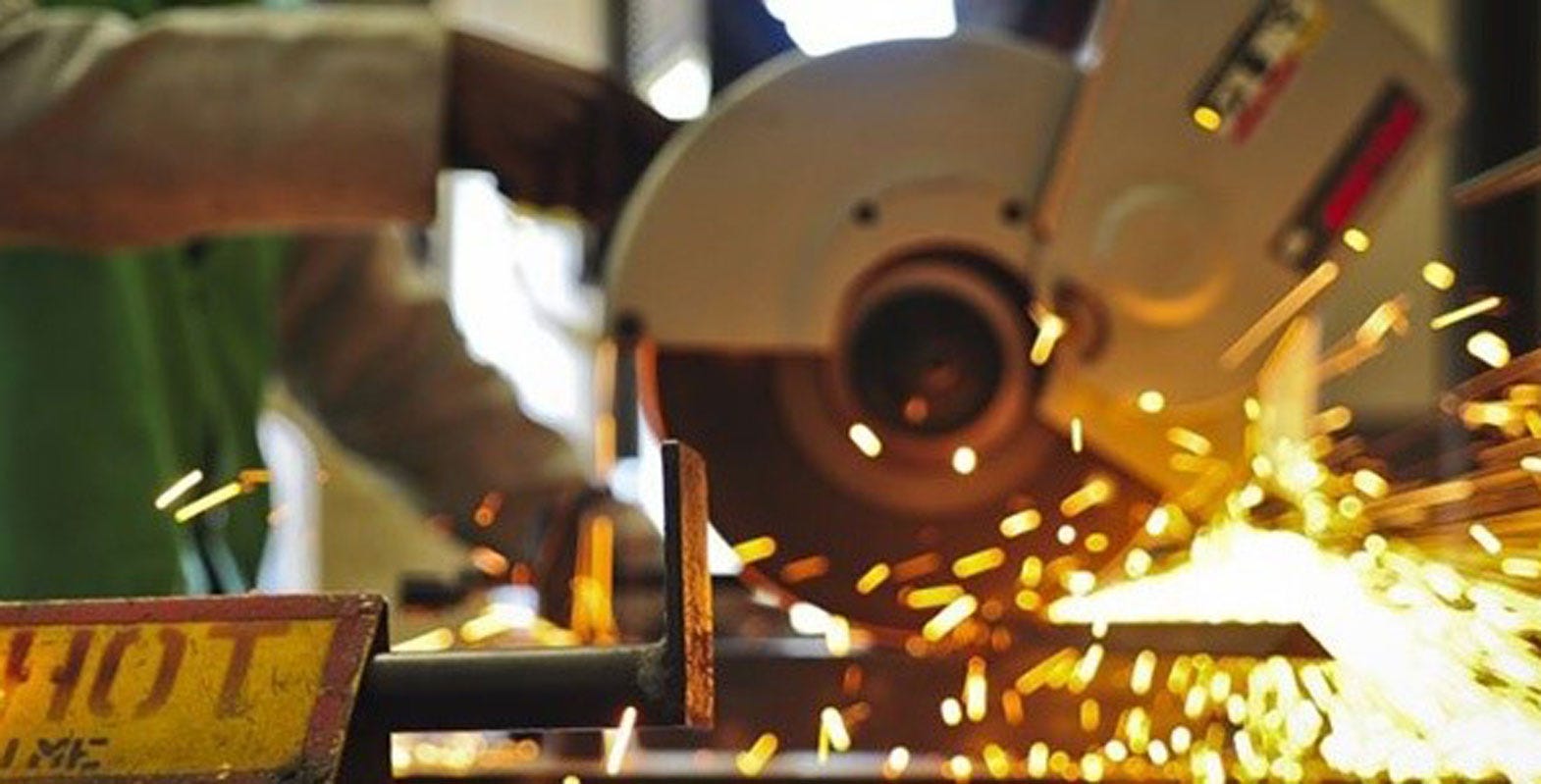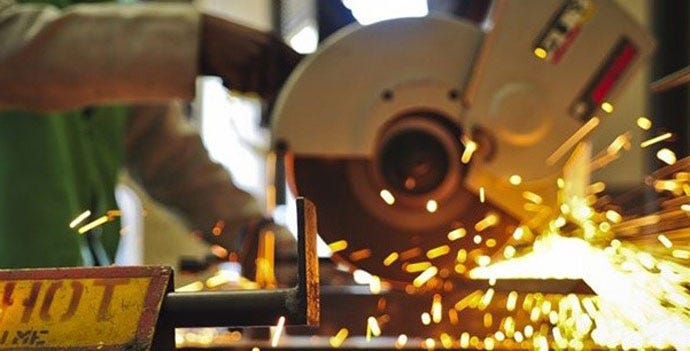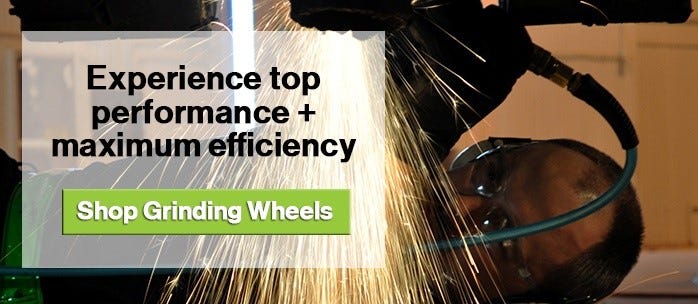5 common grinding wheel problems and how to fix them
Whether you're new to grinding, or a seasoned professional, we've all experienced results that were errr... not exactly what were hoping for. While this can be frustrating, the main thing is being able to work out why it happened so you don't continue to have the same problem. We've put together a troubleshooting guide of the top 5 problems fabricators have when using grinding wheels, and how to fix them.


Troubleshooting Guide
When you notice anything that's not quite right, always check these things first:
- Condition of the diamond dressing tool - check if it is worn or dull, and rotate the tool tip.
- The coolant is moving in the right direction, and filtration is working.
Now for the 5 most common problems and how to fix them:
1. The workpiece is burnt
Causes and solutions:
- In the feed too fast - Reduce the amount of stock removed per pass.
- Dressing on the wheel is too fine - Use a coarser dressing, more 'open'.
- Poor coolant direction - Adjust the coolant direction into the grinding area.
2. Wheel loading and glazing
Causes and solutions:
- Wheel grit is too fine - Try using a coarser grit or softer grade wheel.
- Abrasive is too durable - Use a sharper, more friable abrasive (white).
- Wheel is being dressed too slowly - Increase the dress traverse.
3. Wheel chatter
Causes and solutions:
- Unsupported work - Increase the support.
- Machine vibration - Check the bearing condition.
- Cut rate is too heavy - Try reducing the cut rate.
- Wheel out of balance - Check and adjust.
- Spindle vibration - From worn spindle bearing or an imbalance in flanges.
- Wheel out of trueness - Redress the wheel and check the mounting.
- Glazed face of the wheel - Redress the wheel with a sharp dressing.
4. Poor surface finish
Causes and solutions:
- Wrong wheel dressing - Try a finer dressing, slow down the dresser.
- Worn dressing tool - Inspect, rotate or replace the dressing tool.
- Grit is too coarse - Use a finer grit size.
- Wheel is too hard - Use a softer grade wheel.
- Vibration/chatter - See problem #3 Wheel Chatter.
5. Not holding on corners
Causes and solutions:
- Grit size too large - Use a smaller grit size (the maximum grit diameter should be less than 1.5 times the corner radius)
- Wrong wheel dress - Try a finer dress. Face and side should be true to the wheel.
- Wrong wheel form - Worn out dresser. Use a sharp dresser.
Shade selection isn't the only thing you should be aware of. A lot of auto-darkening welding helmets also include delay and sensitivity controls. These further protect you, by tailoring the adjustments to suit your specific task, environment and lighting conditions.
 Need assistance?
Need assistance?




